Tiger Hill, or Huqiu in Chinese (虎丘), is a renowned scenic spot situated in Suzhou, China, boasting an elevation of 34.3 meters and covering an area of 72.8 hectares. With a history spanning over 2500 years, Tiger Hill may be a modest hill, but it captivates visitors with its cliffs, ravines, and a rich tapestry of natural landscapes. Furthermore, the cultural and architectural heritage from various dynasties enhances the allure of the hill, creating a delicate Jiangnan-style garden.
Tiger Hill holds significant importance as a gathering place for the local people of Suzhou. According to historical traditions, the hill hosts a flower festival in spring, showcasing enchanting displays of peonies, tulips, Belgian azaleas, lilies, and other precious flowers. The juxtaposition of the flower festival is the lively autumn temple fair, echoing the vibrant folk customs of the past and featuring traditional performances that blend the cultural influences of both northern and southern regions.
Table of Contents
- Location and Transportation
- Map of Tiger Hill
- Highlights of Tiger Hill
- Vlog about Tiger Hill
- A Brief History of Tiger Hill
- Attractions near Tiger Hill
- Other Hills in Suzhou
Basic Information
| Estimated Length of Tour | 1 – 2 hours |
| Ticket Price | 70 RMB |
| Opening Hours | 7.30 – 18.00; Last admission: 17.30 |
| Telephone Number | 0086-0512-65893726 0086-0512-67232305 |
| Best Time to Visit | March – May: Tiger Hill Artistic Flower Festival September – October: Tiger Hill Autumn Temple Fair |
Location and Transportation
Tiger Hill can be found in the northeastern part of Suzhou, close to the city center. Its exact address is No. 8, Huqiu Road, Huqiu District, Suzhou, Jiangsu, China. To get there, you can choose the following ways:
Bus: Take bus 9036, Huqiu Express Line, or Tourist line 1 and get off at Huqiu Road to reach the south gate of the scenic area.
Metro: The nearest metro station to the Tiger Hill at the moment is Pinglong Road West (平泷路西) on line 4. After getting out of the station, you can transfer to bus 923 or a taxi to cover the remaining 2.5 kilometers.
Map of Tiger Hill
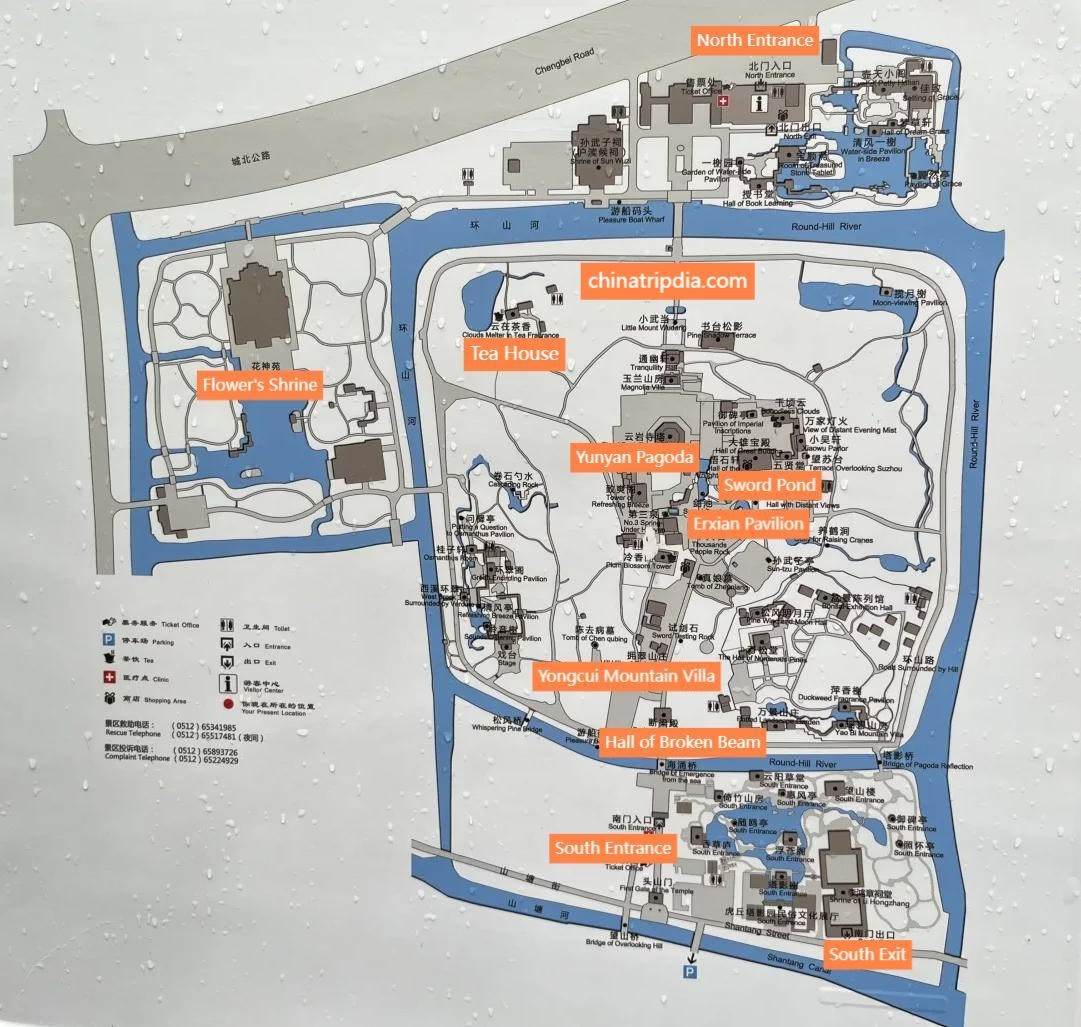
Highlights of Tiger Hill
Jianchi (Sword Pond)

Jianchi (Sword Pond) is one of the most famous attractions on Tiger Hill. The name “Sword Pond” has three origins: firstly, when viewed from above, the pond resembles a flat sword; secondly, legend has it that three thousand precious swords, including the Bian Zhu and Yu Chang treasures, were buried here as part of the burial ceremony for King Helü of Wu; thirdly, it is said that both Qin Shi Huang and Sun Quan came to Tiger Hill and personally dug for swords, contributing to the formation of the sword pool. The characters “虎丘剑池” (Tiger Hill Sword Pond) are engraved near the Circular Hole Gate, originally inscribed by Yan En, the son of the Tang Dynasty calligraphy master Yan Zhenqing. On the stone wall inside the Circular Hole, another inscription by the famous calligrapher Mi Fu from the Song Dynasty reads “风壑云泉” (Wind, Gorge, Cloud, Spring).
Tiger Hill Pagoda (Yunyan Pagoda)
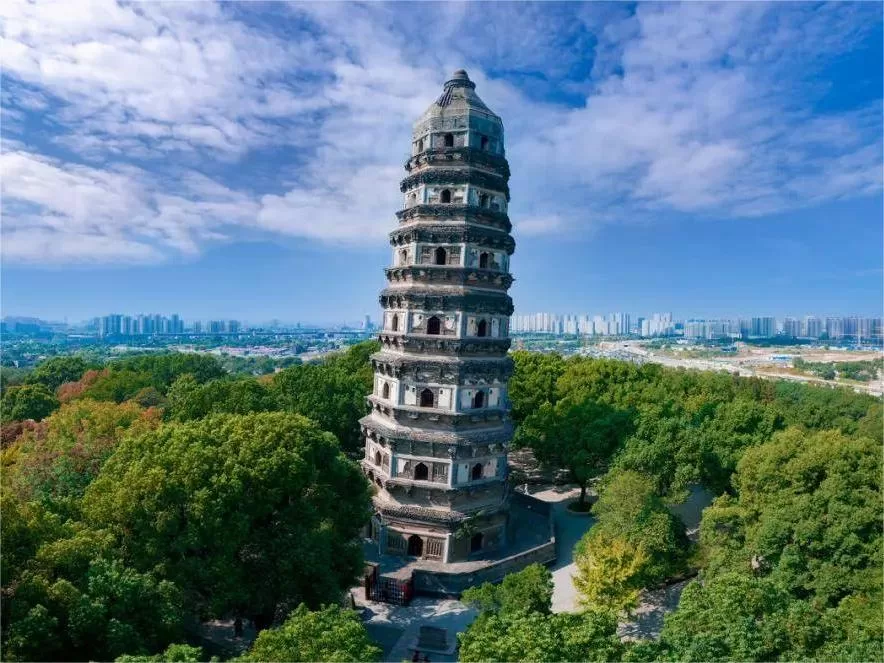
Tiger Hill Pagoda (or Yunyan Pagoda), the second major attraction, is a distinctive structure and the world’s second-leaning pagoda. Built in 959 and completed in 961, the pagoda has stood for over a thousand years. With seven stories and eight sides, the pagoda is 47.7 meters tall, leaning towards the northeast. Its top is 2.34 meters off-center, and the maximum inclination is 3 degrees 59 minutes, earning it the nickname “China’s Leaning Tower of Pisa.” This pagoda is the earliest, largest, and most intricate surviving pagoda of its time in Jiangnan.
Yongcui Shanzhuang (Yongcui Mountain Villa)
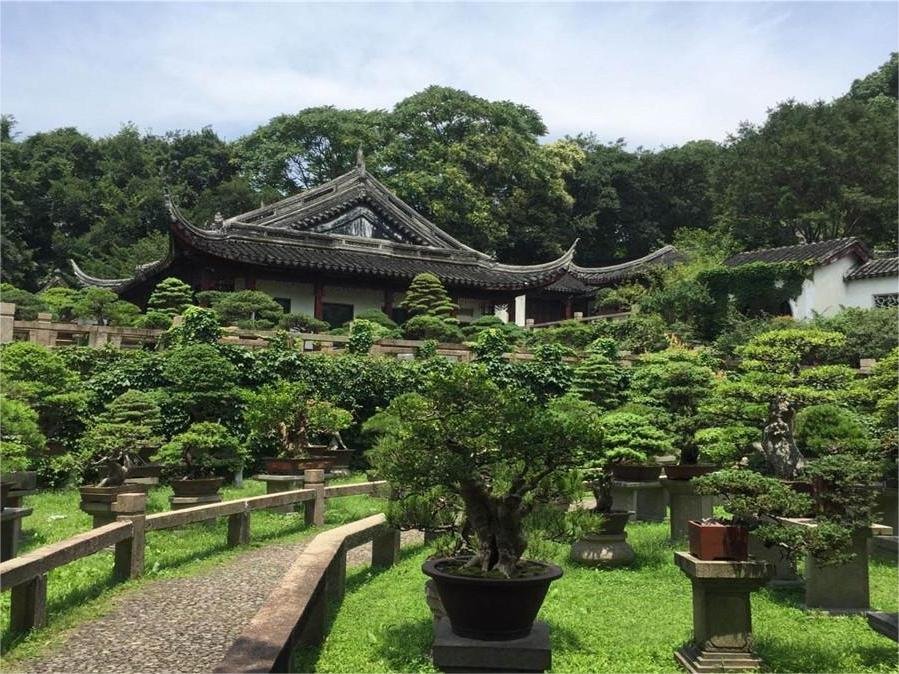
Yongcui Shanzhuang, or the Yongcui Mountain Villa, is an architectural gem flanked by stone inscriptions of the characters “龙、虎、豹、熊” (Dragon, Tiger, Leopard, Bear), boldly and vigorously carved on both sides of the wall. Legend has it that the inscriptions were made by Tao Maosen in the eighth year of the Xianfeng era (1858). This garden, a dry landscape in Suzhou, was initiated by Hong Jun, the top scholar of Suzhou and the husband of the late Qing Dynasty’s famed courtesan Sai Jinhua. The villa, covering just over an acre, is built into the natural slope of Tiger Hill, adopting a terraced garden layout with four distinct levels, each offering different perspectives and varied scenery.
Erxian Ting (Pavilion of Two Immortals)
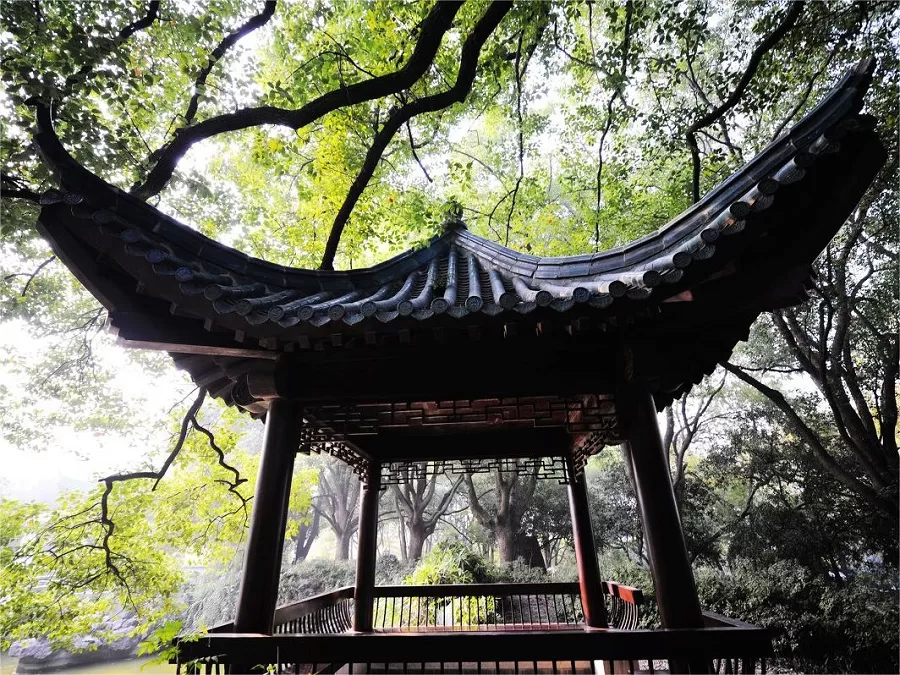
Erxian Ting, or the Pavilion of Two Immortals, originally built in the Song Dynasty, was reconstructed during the Jiaqing era of the Qing Dynasty. Inside the pavilion, two stone steles are carved with images of two immortal beings, Chen Tuan and Lv Dongbin. Legend has it that these two immortals were once playing chess in the pavilion, and a woodcutter who observed them went home, only to find that nobody recognized him. It is said that he had witnessed a game lasting for over a thousand years, and the phrase “仙人一盘棋,世上已千年” (Immortals playing chess, a millennium has passed in the mortal world) originated from this event.
Duanliang Dian (Hall of Broken Beams)
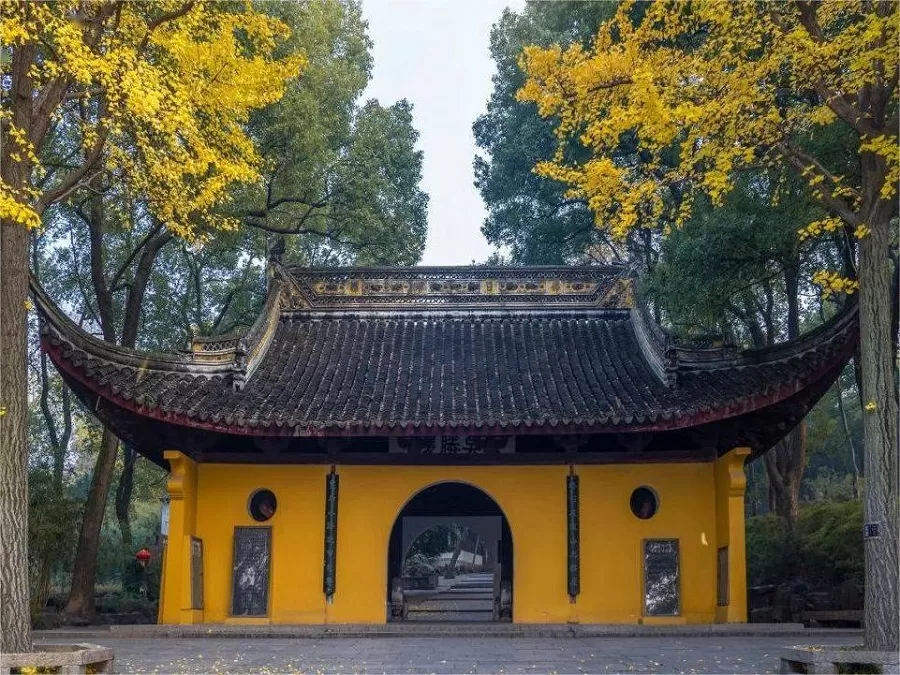
Duanliang Dian, or the Hall of Broken Beams, dates back to the Yuan Dynasty, boasting a history of more than six hundred years. The primary beam of the hall is intentionally broken, constructed using the principles of leverage from mechanics. Underneath the broken beam, a row of brackets disperses the load to the surrounding areas, achieving the goal of saving large wooden materials. The entire hall was built without using metal components, relying only on bamboo, wood, nails, and tenons. Inside the hall, four stone steles record the history of Tiger Hill and the construction of the Yunyan Temple Pagoda. When lightly tapping the broken stones, a resonant echo is produced, giving rise to its other name, the Resounding Stele.
Vlog about Tiger Hill
A Brief History of Tiger Hill
Tiger Hill, located in Suzhou, has a long and fascinating history that spans several centuries. In ancient times, it was a small island that emerged from the sea due to natural changes in the landscape, originally known as Haiyong Mountain. During the Spring and Autumn Period, Tiger Hill became the residence of King Helü of Wu, and it was here that he was buried after his death in 496 BC. Legend has it that after three days, a white tiger appeared and guarded his tomb, giving the hill its name.
By the Eastern Jin Dynasty, the area became an important Buddhist site. Notable figures like Wang Xun and his brother Wang Min built villas on the mountain, later transforming them into the Tiger Hill Temple in 327 AD. This marked the beginning of Tiger Hill’s association with Buddhism. In the 6th century, the Sui Dynasty emperor ordered the construction of a stupa on the hill, solidifying its significance as a Buddhist center.
During the Tang and Song dynasties, Tiger Hill underwent further development. The hill was renamed Wuqiu during the Tang Dynasty to avoid the name of Emperor Li Yuan’s grandfather. In the 9th century, however, the famous Buddhist sites were destroyed during the anti-Buddhist movement of Emperor Wuzong, only to be rebuilt in the following years.
The Qing Dynasty saw a period of prosperity for Tiger Hill, particularly during the reigns of Emperor Kangxi and Qianlong. Many important structures, including the Wansui Tower and the Yu Bei Pavilion, were built. However, in the 19th century, the hill was severely damaged during the Taiping Rebellion, leaving only ruins behind. It wasn’t until the late Qing and early Republic periods that restoration efforts began, leading to the preservation of the Tiger Hill we know today.

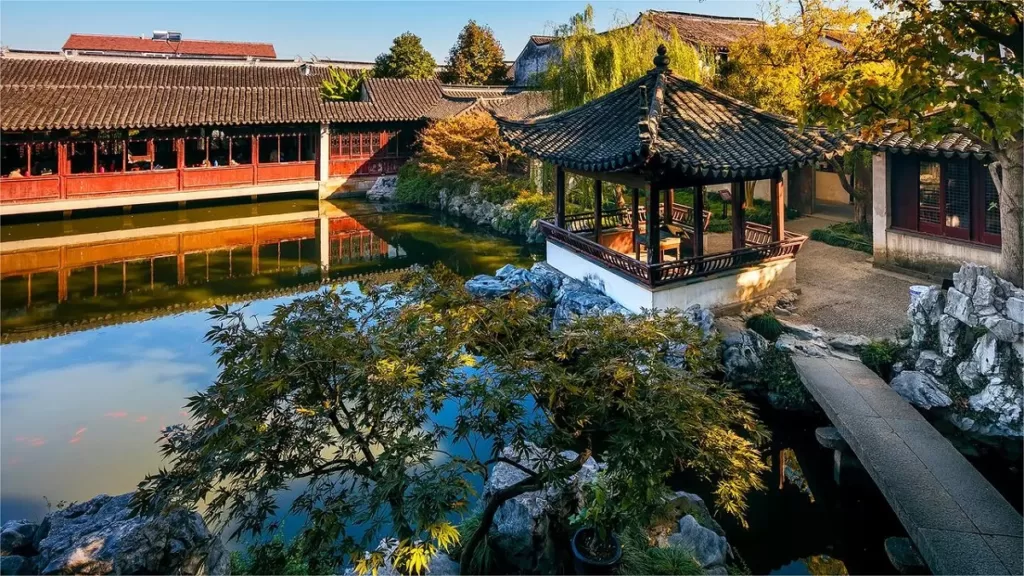
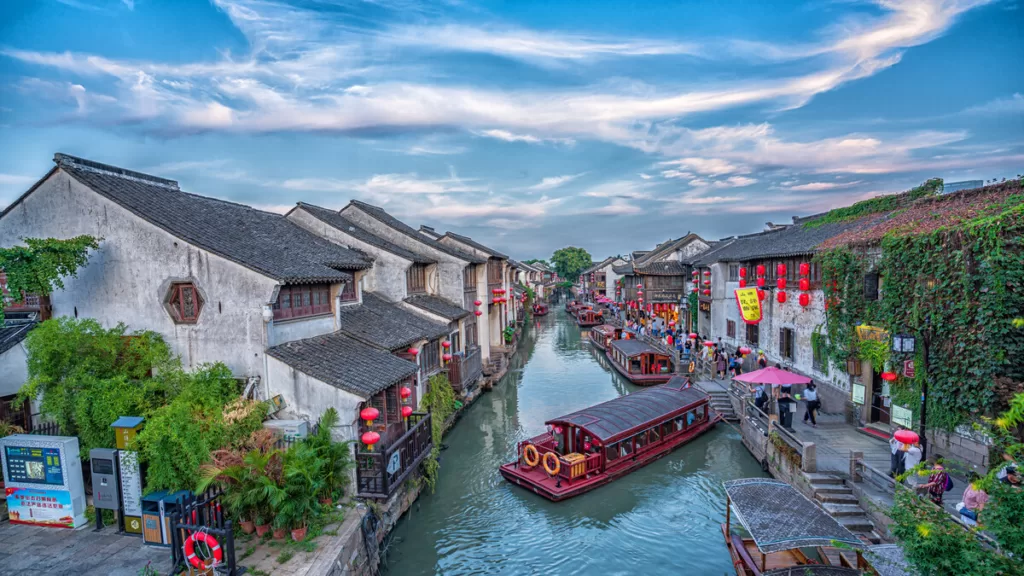
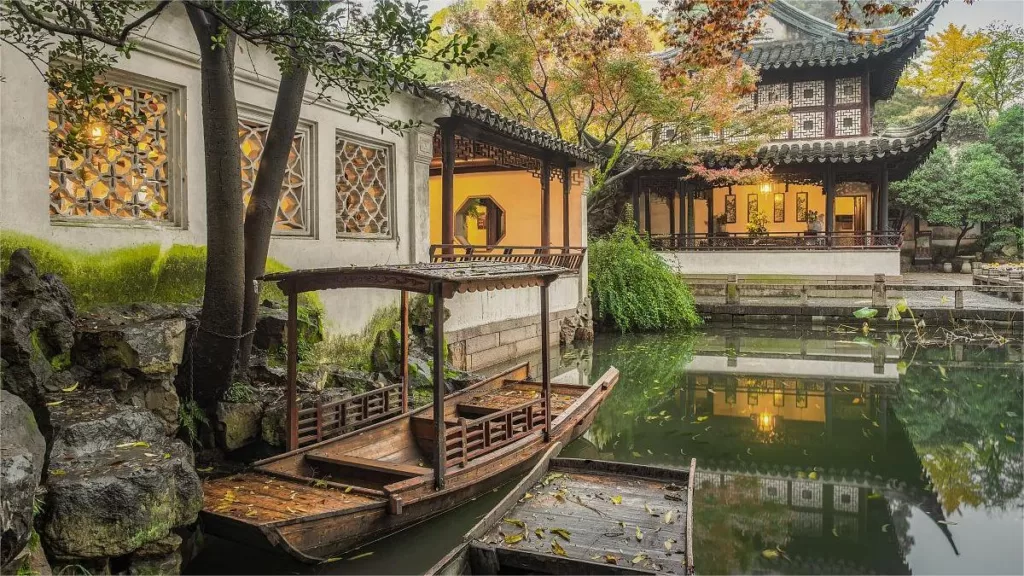
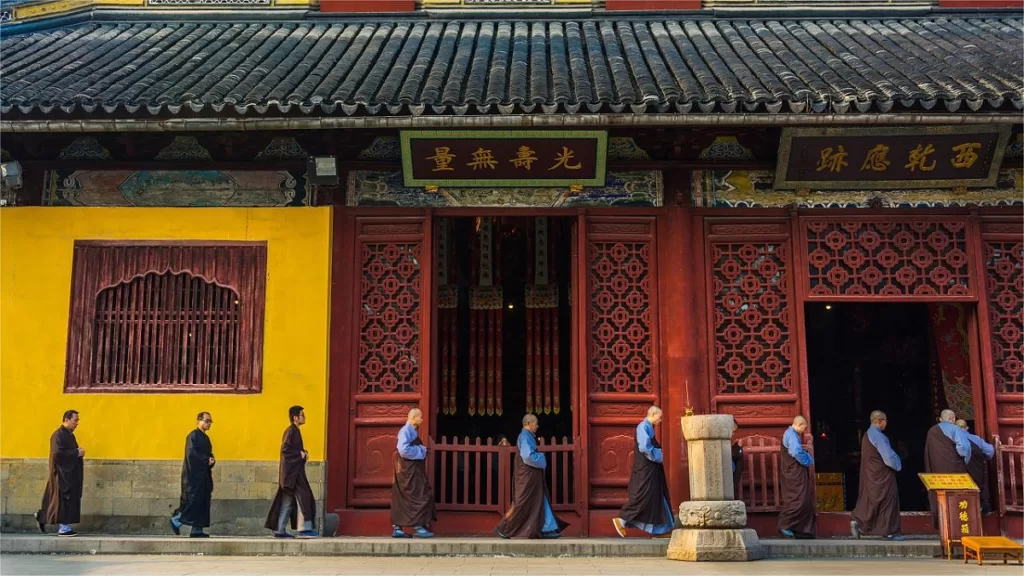
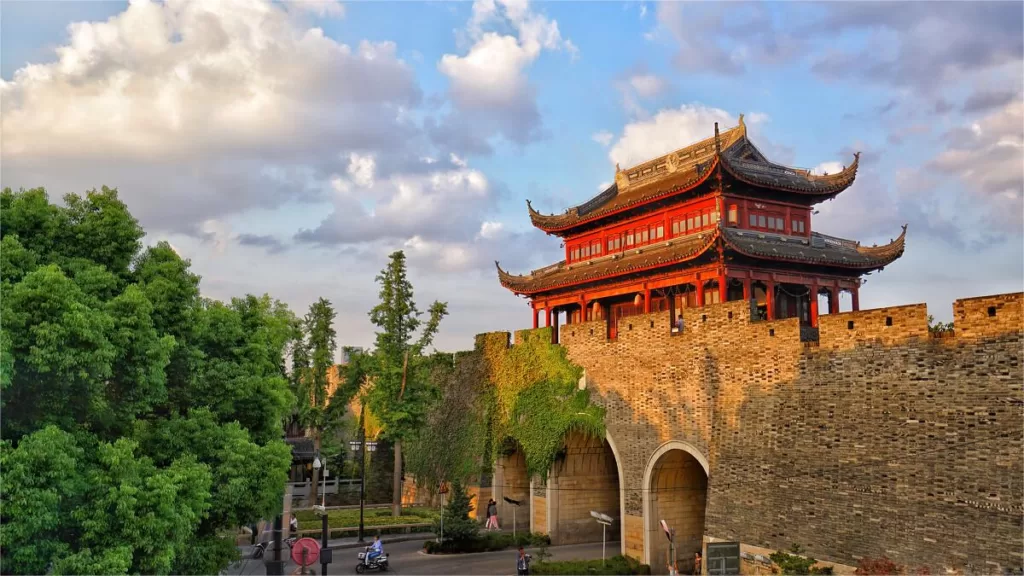

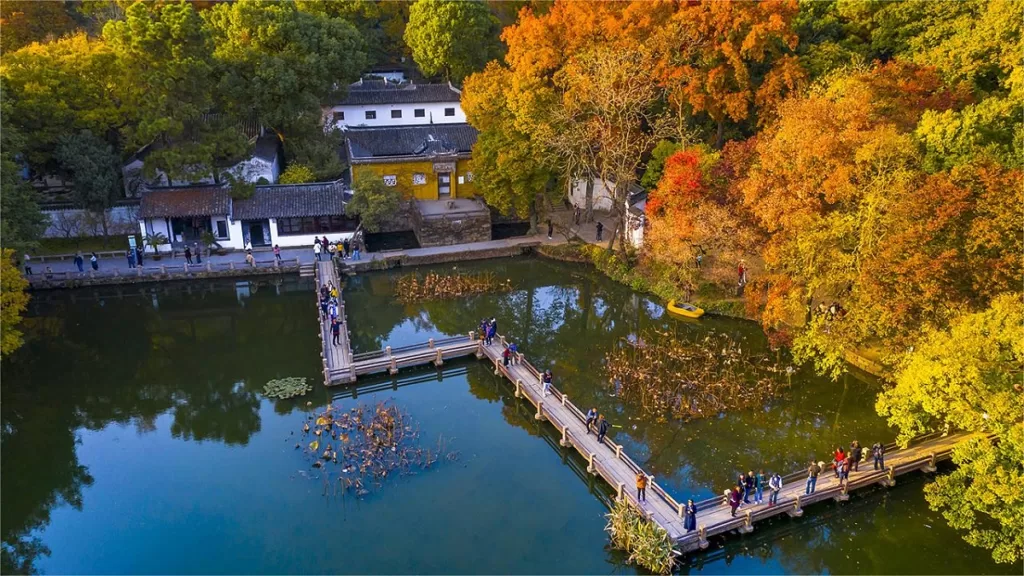
0 Comment